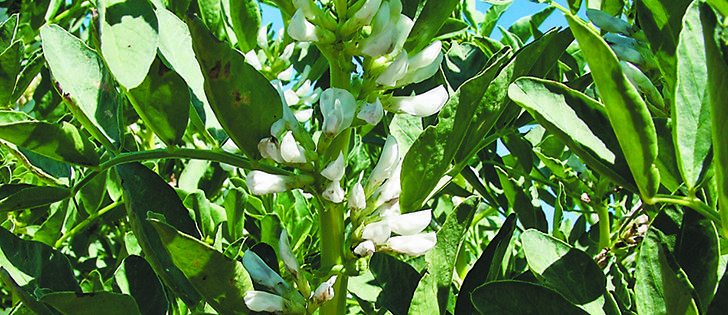ENCHANT, Alta. — Fababeans were the crop du jour at a July 16 field day that attracted 80 southern Alberta farmers.
An estimated 15,000 to 16,000 acres have been planted to the crop in Alberta this year, the highest amount ever seeded in the province.
“The attraction is it’s a high yielding crop in all areas of the province except maybe the real, real dry areas,” said Alberta Agriculture pulse crops unit head Mark Olson. “It’s a moisture loving crop. It’s a perfectly standing crop, it’s high yield, the contracts they were offering last year were very lucrative and guys were comparing it to canola and saying, ‘wow, we’re getting these kinds of yields at this price, it’s very comparable.’ ”
Read Also

Crop quality looks good this year across Prairies
Crop quality looks real good this year, with the exception of durum.
Growers examined plots at Stamp’s Select Seeds and heard Greg Stamp’s thoughts on fababean production and yield, as well as information on other seed Stamp seed offers.
“We feel it’s a low risk pulse crop for irrigation,” said Stamp.
The family operation has been growing fababeans for 10 years and this year seeded the tannin variety 9-4 and the zero tannin variety Snowbird.
As with other pulse crops, fababeans are attractive because of their nitrogen fixing ability, which limits the need for nitrogen in the next crop in rotation.
“It fixes 30 percent more nitrogen than peas, and the following year you can anticipate an 80 bushel crop of fababeans will put 80 pounds of actual N in your soil for your next crop,” Stamp said.
He applied 40 to 60 lb. of phosphorus to his crop this year, which was planted in early May.
Olson cautioned growers to analyze their seeding equipment before deciding on fababeans, which are 350 to 700 grams per 1,000 seeds.
“You’ve got to be really careful seeding these,” Olson said.
You’ve got to make sure you can get them through the drill.”
Some growers seed once at a rate of 2 1/2 bushels per acre and then again at a 90-degree angle with another 2 1/2 bu. per acre.
“Most planters can do it, but there are some issues with openers, manifolds and things like that, so you have to be cautious when you’re thinking about your drill,” Stamp said.
Olson said 40 percent of Alberta’s fababean acres were under irrigation last year. It is a relatively new crop for Alberta, and there is little disease and insect pressure.
Chocolate spot, a botrytis, is the main problem, though Stamp said only one grower reported the disease last year in his region.
Pea leaf weevil is also a fan of fababeans.
“We might have to rename it faba-bean leaf weevil because actually it seems that the weevils have a preference for fababeans over peas,” Olson said jokingly.
“If you have a plot side by side, they’ll chew the heck out of the fababeans more so than the peas.”
Stamp swaths his fababeans to limit shattering of the bottom pods, which can occur when using a straight-cut header.
He swaths when the crop is wet with dew, which avoids shelling problems. A swath roller has avoided problems with swath loss due to wind, he added.
Olson said he recommends straight cutting rather than swathing fababeans in most cases. The crop should be cut when 80 percent of the pods have blackened.
At about four plants per sq. foot, swaths can settle into the ground and potentially pick up soil toxins, which make them less attractive to buyers.
Yields are 50 to 60 bu. per acre on average, with reports as high as 125 under irrigation. Stamp said he achieved 77 bu. per acre on one of his fababean crops last year. His goal is at least 84.
Most fababeans are grown under contract to Alliance Grain Traders and Alberta Pulse Commodities.
Stamp said buyers usually favour tannin varieties over zero tannin types, but zero tannin varieties can find a home in the feed market.
















